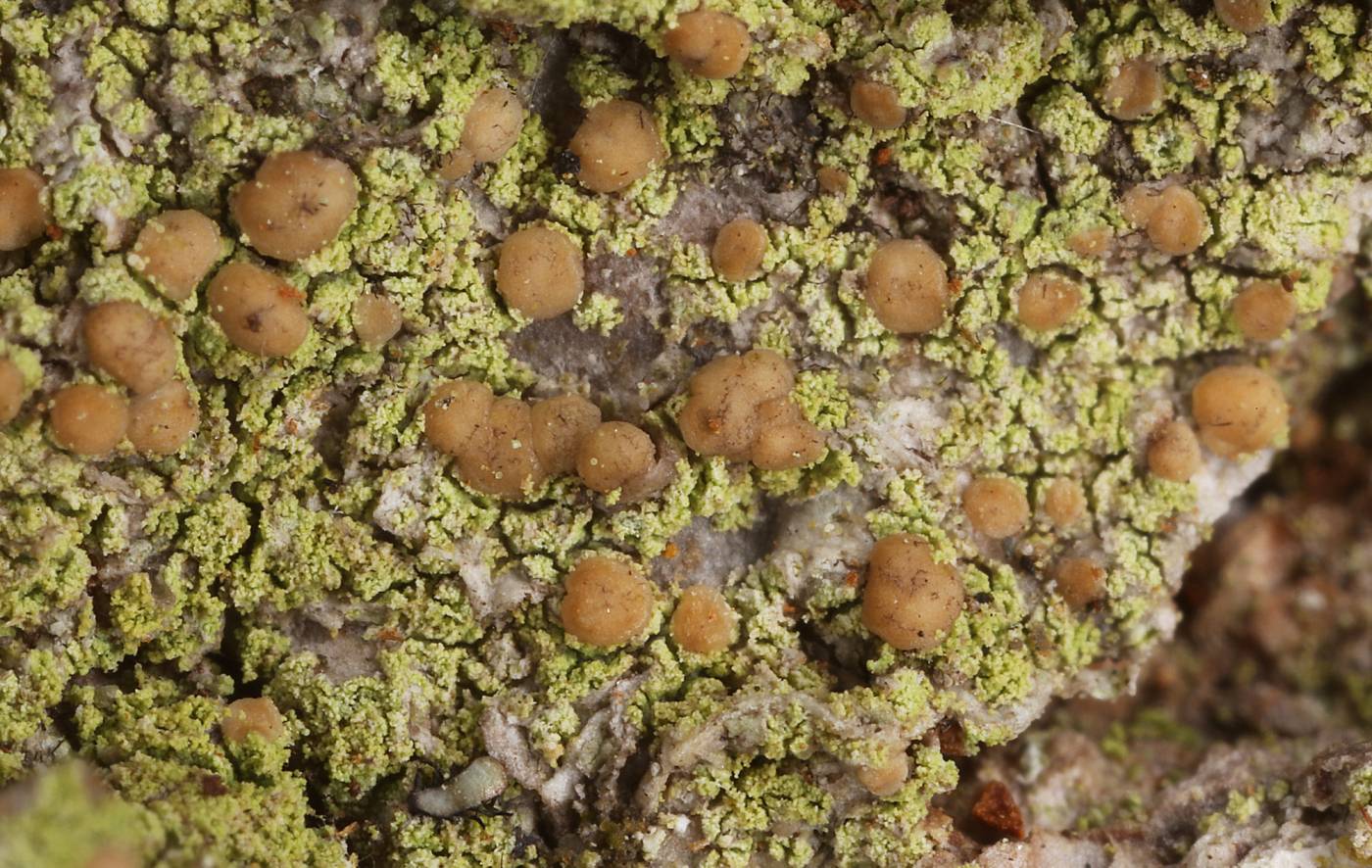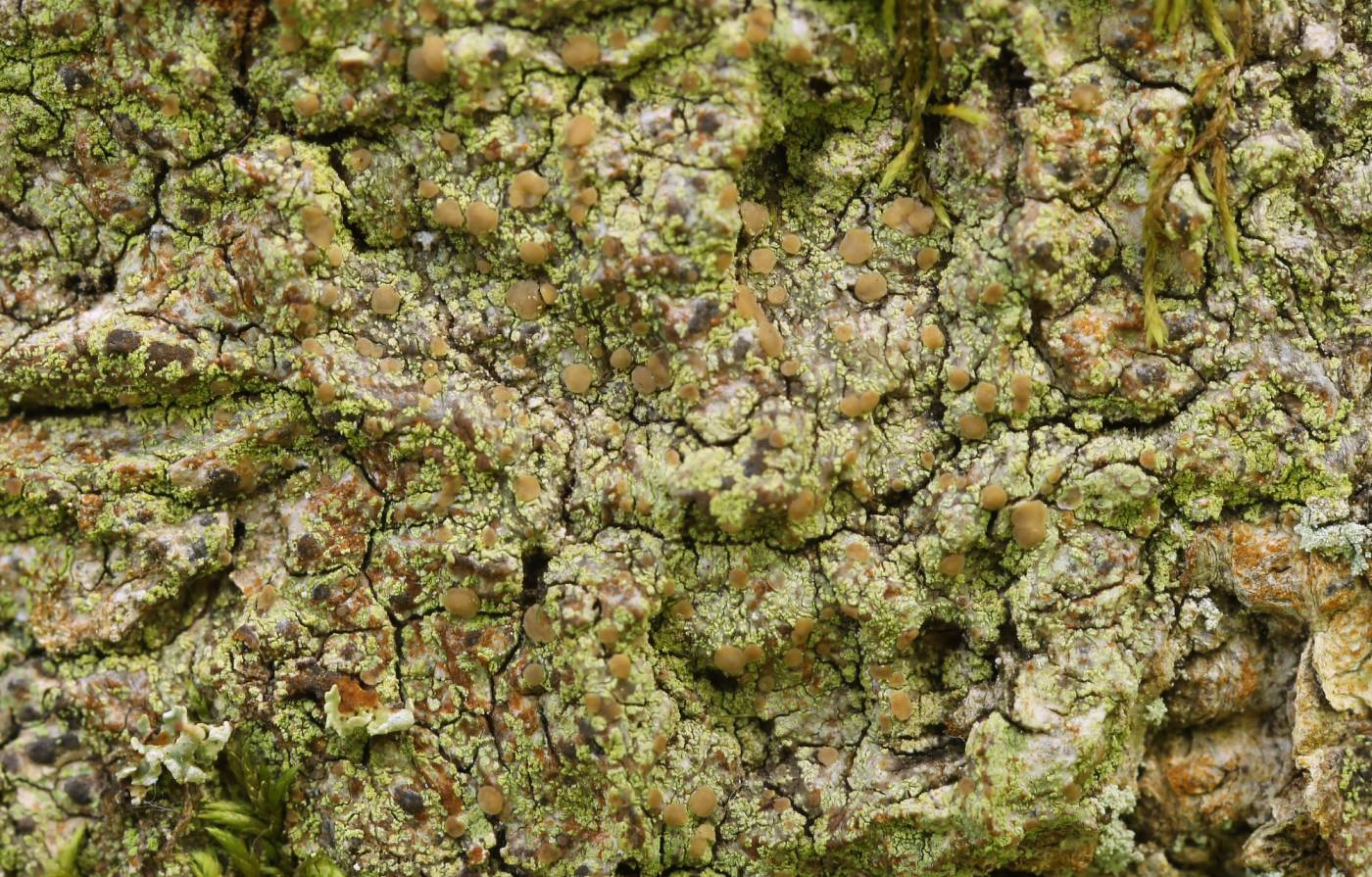A characteristic soredia-producing microlichen of moist mountain shady forests, where it often grows on acidic smooth bark of younger and middle-aged trees. In our conditions, it prefers the bark of Fagus, Sorbus and Acer pseudoplatanus. In climatically suitable habitats, such as the Šumava Mountains, it can also occur in managed forests. Otherwise, it is rather a rare species of well-preserved forests. In mountain forests of limestone areas, in the Alps and Carpathians, it is often found also on young trunks and branches of Picea abies (Printzen 1995). In the Czech Republic, it is a scattered species, usually growing at elevations above 700 m. It forms the richest populations usually in densely forested humid areas, in localities with long-term snow cover. Here it more often forms fruiting bodies and usually creates synusiae with other members of the genus Biatora. In some beech forests of Šumava, it even belongs to dominant microlichens at bases of trees. Vondrák & Kubásek (2019) rank it among the indicative species for beech woods.
Literature: Printzen C. (1995): Die Flechtegattung Biatora in Europa. – Bibliotheca Lichenologica 60: 1–275. Vondrák J. & Kubásek J. (2019): Epiphytic and epixylic lichens in forests of the Šumava mountains in the Czech Republic; abundance and frequency assessments. – Biologia 74: 405–418.
taxonomic classification:Ascomycota → Lecanoromycetes → Lecanorales → Ramalinaceae → Biatora
Red List (Liška & Palice 2010):VU – vulnerable
Occurrence in the Czech Republic
All records: 296, confirmed 214. One click on a selected square displays particular record(s), including their source(s).


